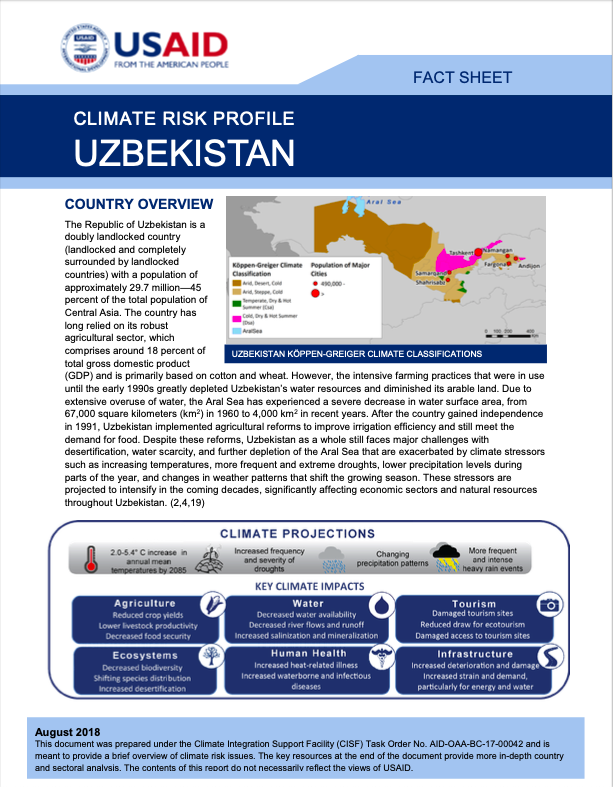Resource information
This profile provides an overview of climate risk issues in Uzbekistan, including how climate change will potentially impact five key sectors in the country: agriculture, water, tourism, ecosystems, human health, and infrastructure. The brief also includes an overview of historical and future climate trends in Uzbekistan, the policy context outlining existing climate risk strategies and plans developed by Uzbekistan, and a list of ongoing projects that focus on climate adaptation.
The country has long relied on its robust agricultural sector, which comprises around 18 percent of total gross domestic product (GDP) and is primarily based on cotton and wheat. However, the intensive farming practices that were in use until the early 1990s greatly depleted Uzbekistan’s water resources and diminished its arable land. Due to extensive overuse of water, the Aral Sea has experienced a severe decrease in water surface area, from 67,000 square kilometers (km2) in 1960 to 4,000 km2 in recent years.
After the country gained independence in 1991, Uzbekistan implemented agricultural reforms to improve irrigation efficiency and still meet the demand for food. Despite these reforms, Uzbekistan as a whole still faces major challenges with desertification, water scarcity, and further depletion of the Aral Sea that are exacerbated by climate stressors such as increasing temperatures, more frequent and extreme droughts, lower precipitation levels during parts of the year, and changes in weather patterns that shift the growing season.

